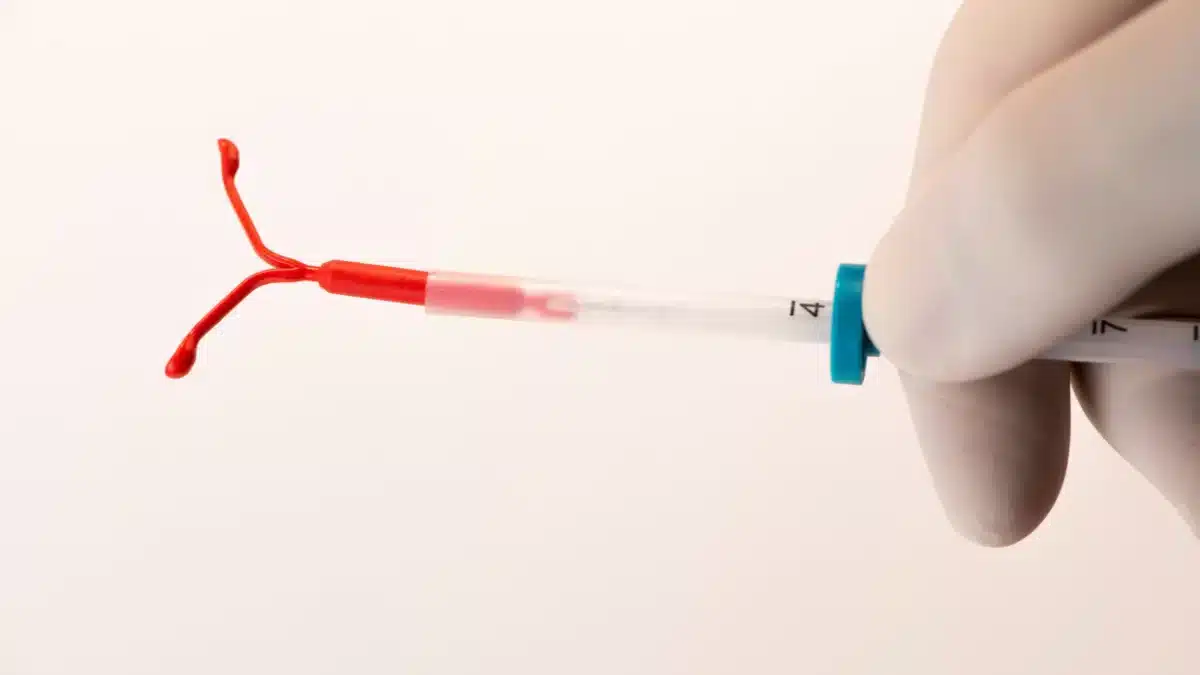Exploring IUD Pros and Cons
Intrauterine Devices (IUDs) stand as a prominent contraceptive option, providing a range of advantages and considerations.
As small, T-shaped devices inserted into the uterus, IUDs offer highly effective and long-lasting protection against pregnancy.
This article explores the landscape of IUD pros and cons.
From convenience and efficacy to discomfort and side effects, understanding the pros and cons is vital for individuals navigating reproductive health.
Delving into this nuanced discussion empowers individuals to make informed decisions aligned with their unique needs and preferences.
Types of IUDs
There are mainly two types of IUDs that the U.S. Food and Drug Administration approves: Hormonal IUDs (Mirena, Kyleena, Skyla, and Liletta) and Non-hormonal IUDs (Paragards).
Suppose you’re considering the use of an Intrauterine device (IUD) for birth control or to address gynecological concerns.
In that case, you may be curious about the pros and cons of IUD.
To provide comprehensive insights into IUDs, Dr. Ashley Brant, an Obstetrician/Gynecologist with a public health (DO, MPH) background, shares the following information.
Pros of an IUD
Following are the pros that one can attain while using IUDs.
Long-lasting
IUDs offer long-acting contraceptive benefits.
Depending on the specific type, these devices are approved by the U.S. Food and Drug Administration (FDA) to provide effective contraception for three to 10 years.
Managing heavy periods

The use of hormonal IUDs frequently results in periods that are lighter, shorter, and less painful.
This is why they are often recommended for individuals experiencing heavy and painful periods.
Dr. Brant points out that up to half of individuals may even cease having their periods entirely after three to seven years on Mirena.
However, this percentage is somewhat lower with other hormonal IUDs.
Effectiveness is high
With a success rate of more than 99% in preventing pregnancy, IUDs exhibit a level of efficacy comparable to permanent sterilization.
Dr. Brant emphasizes that solely in terms of effectiveness, IUDs stand out as one of the most recommended and highly effective options among long-acting reversible methods of birth control.
Once inserted, it is ready to use
Minimal effort is needed, which is an added advantage, especially for those who may be forgetful about birth control.
The only requirement is to schedule the initial appointment to insert the IUD.
According to Dr. Brant, the typical procedure involves a standard office appointment for IUD insertion, which includes a speculum exam and the insertion of the IUD through the cervix.
Emergency contraception
The copper IUD is a safe option for emergency contraception and can be used up to five days after unprotected sex or birth control failure, according to the World Health Organization.
Recent evidence also indicates that certain hormonal IUDs may function effectively as emergency contraception.
Cons of IUD
Following are the cons that one can attain while using IUDs.
Pain while inserting
The level of pain experienced during an IUD insertion procedure can range from mild to moderate, varying from person to person.
While the evidence on whether Nonsteroidal Anti-Inflammatory Drugs (NSAIDs) assist with pain during insertion is mixed, they are known to be beneficial in alleviating cramping afterward.
May not work for everyone
It’s not necessary that the IUD method will work for everyone.
Your healthcare provider or Obstetrician/Gynecologist can assist in determining whether this is a concern for you.
There can be side effects

Whether you choose hormonal or non-hormonal IUDs, it’s common to experience irregular bleeding and cramping in the initial months.
If irregular bleeding and cramping persist beyond three months, your doctor may suggest a course of Ibuprofen for one to three months to alleviate pain and reduce bleeding.
Alternatively, a temporary prescription of birth control pills may be recommended to help regulate your menstrual cycle.
Conclusion
IUDs present a compelling contraceptive option with various advantages and considerations.
From their long-acting effectiveness to potential side effects, understanding the nuanced landscape of IUDs is crucial for individuals navigating reproductive health choices.
Ultimately, weighing the pros and cons empowers individuals to make informed decisions aligned with their needs.
It fosters a comprehensive understanding of the diverse aspects surrounding IUD use.
Read the article Understanding Copper IUD Side Effects: What You Need to Know.
Frequently Asked Questions
What are the negatives of an IUD?
Copper-releasing IUDs may result in cramps, extended and heavier menstrual periods, as well as spotting between periods. On the other hand, progestin-releasing IUDs can lead to irregular bleeding and spotting in the initial months. It’s important to note that IUDs may elevate the risk of ectopic pregnancy.
Do IUDs cause weight gain?
No, the copper IUD (Paragard) does not result in weight gain. As it is hormone-free, this type of IUD has minimal side effects. However, some individuals may experience heavier, longer periods and increased cramping, particularly during the initial months.
What is the biggest risk of IUD?
A potentially severe complication associated with IUDs is infection, often stemming from the insertion procedure. While the risk of infection is minimal, if it does occur, it can usually be treated without necessitating the removal of the IUD.
Is inserting an IUD painful?
Individuals typically experience some cramping or pain during the insertion of their IUD. The intensity of the pain may vary, but fortunately, it is usually brief, lasting only a minute or two. Some healthcare providers recommend taking pain medication before the IUD insertion to help prevent cramps.
WowRx uses only high-quality sources while writing our articles. Please read our content information policy to know more about how we keep our content reliable and trustworthy.






